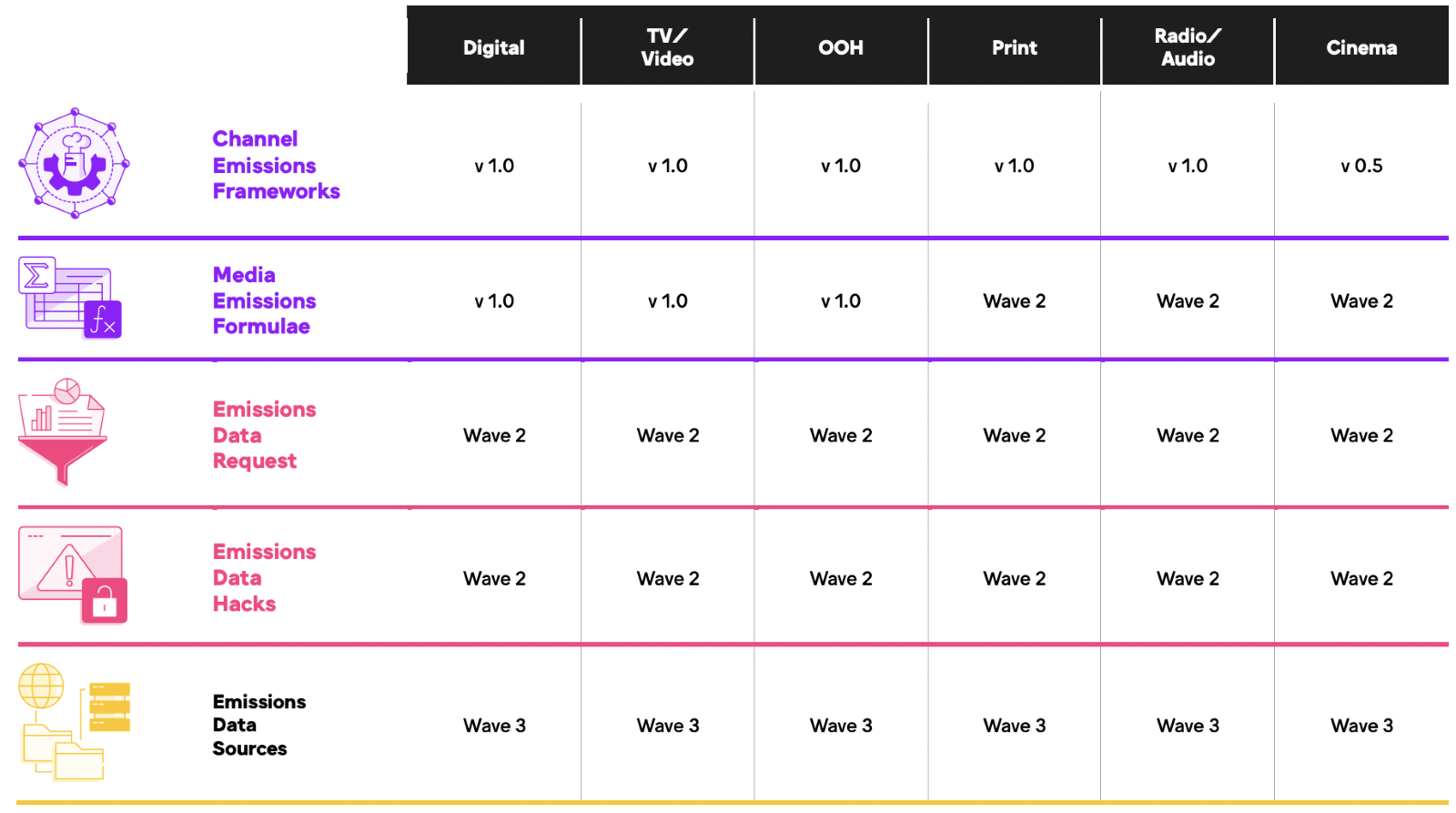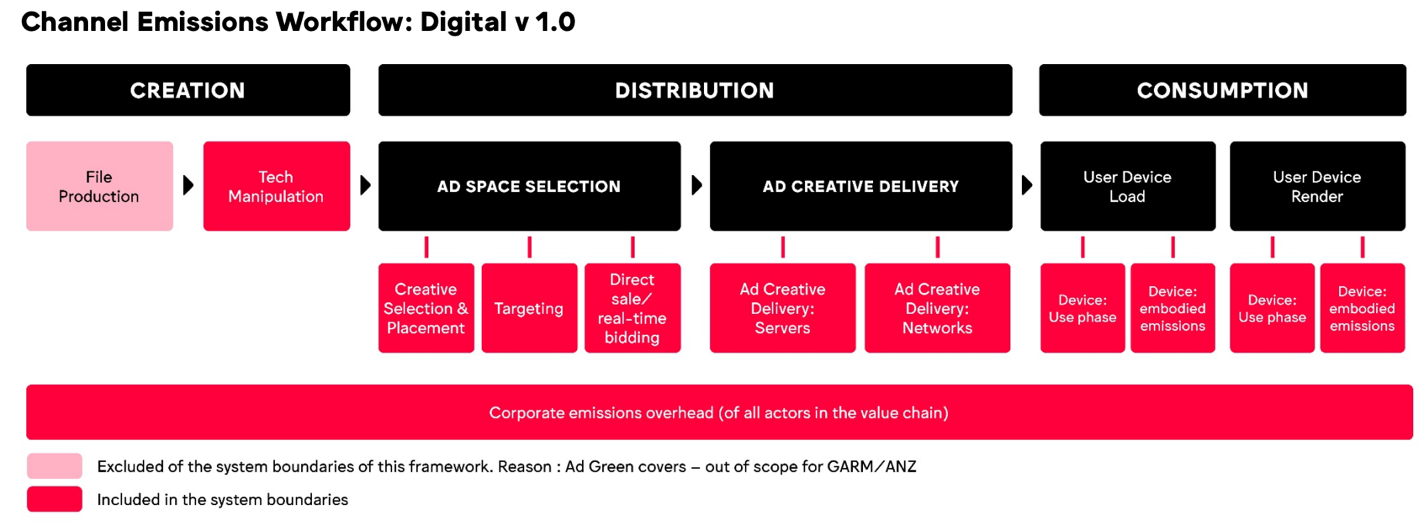The media industry recently took a big step forward on the road to a sustainable ecosystem with the launch of the much-anticipated Global Media Sustainability Framework.
Now the sole owner of Ad Net Zero after GARM was forced to close following legal action by X owner Elon Musk, the move is the culmination of more than a year of close collaboration from parties across the length and breadth of the industry.
Here at Impact Plus, we are excited to be involved in the development of the first iteration of the new system and the ongoing discussions around its development. Launched at Cannes Lions this year, it aims to standardize the way advertisers, advertisers and organizations assess the greenhouse gas (GHG) emissions produced by their advertising.
Although it is only the first step, the new initiative, which has attracted widespread support throughout Adland, plays an important role in providing a common language and funding for the industry to get behind in its mission to combat digital advertising’s large carbon footprint.
But at 67 pages long, covering everything from standards, practices and best practices, you could be forgiven if you haven’t had a chance to read the new document cover to cover yet. But, now that Ad Net Zero has become a sole shareholder following the collapse of GARM in August, it’s the perfect opportunity to get involved.
To help you save time, we’ve put together five important things you should know about the new system and how working with a development platform can help:
The first article was published on Impact Plus blog.
1. Don’t think it bothers you? Think again
It would be easy to think that the new style doesn’t affect you, that it’s something for someone who has “possibility” in the name of their job to worry about. Besides, there’s already a bunch of features that exist and they’re only voluntary, right?
But this new feature looks set to change everything. While French industrial associations and private companies were mainly responsible for developing them in the past, this new system is the result of an industrial partnership between more than 120 organizations, covering 42 markets. To give you an idea of the numbers we are talking about, the project included 53 vendors, 6 media holding companies, 31 media owners, 27 industry associations and 23 media solutions solutions, collaborating in 6 working groups.
Other big players also took part. Companies and organizations involved in this launch include WFA, ANA, Diageo, Dentsu, Google, GroupM, Havas, IAB, IAB Europe, L’Oreal, Omnicom, Publicis Groupe, Mastercard, Meta, and Impact Plus, of course — just to name a few.
So, with global acceptance, global reach and the fact that it will cover all forms of advertising in the future, it means that regardless of whether you work on the advertiser-side, publisher-side, or any company in between, this is a new feature. it will have an impact on the way you work.
2. But there is no need to panic
Even though we’ve said that a new shape changes everything, there’s no need to panic, no matter what stage you’re at on your fitness journey.
For those of you who haven’t started, it’s a great place to start your development journey. The design simplifies the ongoing vendor selection process, with Ad Net Zero support providing the same revenue when reviewing releases and interactions between vendors. So, any decision you make about which vendors to use will be focused on their designs that meet your needs rather than spending time looking at how their models differ from each other.
Meanwhile, for those who have already set various guidelines on how to measure, compare and reduce your advertising, it is not a big change from what was done before and it should be easy to use the new version.
That’s because, even though it’s important, the new system isn’t a departure from the work that’s been done before. It was built with previous standards in mind (especially for Digital, Alliance Digitale’s SRI methodology, and OneFrame for other channels) and was designed following a lot of input from leading GHG measurement vendors. It is also in accordance with the IPCC and GHG Protocol methods used in other sectors.
There is also a lot of help out there – starting with choosing the right promotion platform to help guide you through the process.
3. The journey continues to green advertising
Another important point to make about the new system is that this is just the first step on a bigger journey.
There is still a lot of work to be done and the framework will continue to change as the industry strives to be more closely monitored for emissions.
Below is a chart showing the steps planned to be taken in the next iterations:

This is because, while the media channels and their formulas are already included in the structure, some of the key data, used when the appropriate data point does not exist, are missing. This means that everyone doing the planning must continue to work using their imaginations. .
Until we have them, combining the different methods available on the market remains a challenge. That is why it is the focus of the latest Wave (2), labeled as ‘Emissions Data Hacks’.
Having a unified system not only helps to harmonize these ‘presumed’ values, it also opens the door to allow the industry to push to improve the way to find the missing data and provide accurate readings.
Because of the constant changes to the system and the updating of data points, working with a dedicated and robust platform is essential in helping you stay ahead of the curve when changes are made. Impact Plus will be aware of all changes on our blog.
4. The frames are not complicated to understand – especially if you are working with a security partner
While the report can be daunting at 67 pages, each filled with a lot of talk about ‘principles’, ’emissions approaches’, ‘materiality’ and ‘data specificity’, each station has its own release plan that is easy to follow. Especially if you only focus on the two parts you want, which are written in very clear language.
Each of these channel systems describes the following:
- The workflow shows the different stages of the advertising life cycle, from creation to consumption;
- The table describes the applicable units, the outputs from the required data sources and the formula for combining those factors into emissions calculations.
For example, below is a chart that looks exactly at the workflow (A) for the Digital channel.

As you can see, it covers the different stages of the marketing journey and provides a blueprint.
Meanwhile, the image below shows a snippet of table (B) that focuses more on the distribution section. In it, you can see from the ‘Ad Space Selection’ step that there is a sub-step called Real-time Bidding (RTB) which generates emissions and servers that manage the transmission.

These output scales depend on the number of displays, the number of routes/requests made, and the computation time required. Finally, there is a formula to calculate the output from this step. This is repeated to define each step and sub-step from each step in the workflow that produces the output.
This is a great step towards transparency, helping everyone to easily understand and use the same language to discuss the various metrics, data points and measures that characterize the release. However, in practice it can still be difficult to do.
With the experience that is a combination of different channels, platforms, creative types, types of connections, ad selection methods etc., it quickly becomes a complex system to keep yourself, and that does not even include the data to see, information or reduce tracking and. simulation that often goes along with this raw environmental data to make the most of it.
For that reason, we recommend working with a dedicated vendor(s) to ensure performance, and future repairs. If you have your own reporting systems and data capabilities, it is often possible to integrate the data directly from these tools to power your reporting and optimization systems.
5. There are things you can do now
So, now that you know the important changes that are happening throughout the industry, what are you going to do about it?
There is already a lot of frustration within the industry at the perceived lack of action across adland to address the issue of advertising. But instead of waiting, there are things you can do now to help. Following the launch of a new system, there’s never been a better time to start, especially if you haven’t yet engaged with a real estate agent.
To help, we’ve put together some helpful extra reading for you to check out.
The first place we recommend you review is this how-to guide, which is a quick way to familiarize yourself with the new direction. The 10-point guide covers the following areas:
- Choosing strong vendors and facilities
- Addressing the design issues of media decarbonisation
- Strong media planning and buying
Of course, if you want to dive straight into the report itself, you can read it here.
If you have any other questions about the structure, or ask about sustainability in digital marketing in general, we suggest that you contact your resume, or contact us here.
#Global #Media #Sustainability #Framework #LBBOnline